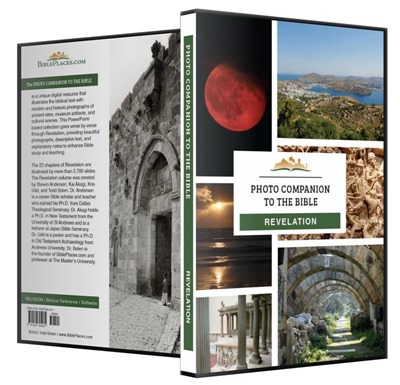“A lead sling bullet has been discovered in Yavne bearing an inscription showing that it may have belonged to a Greek soldier in the war against the Hasmoneans during the Hellenistic Period.”
The Times of Israel has more about the Roman road discovered in Galilee, with photos.
“In an unusual collaboration, archaeologists in Israel are working with police to analyze prints left on fifth- or sixth-century pottery shards.”
The Temple Mount Sifting Project recently had to “carry out excavations in landscaping terraces into which soil removed from the Temple Mount was placed for long-term storage about 15 years ago.”
Nava Panitz-Cohen explains what we know about various references in the Bible to pots, bowls, jugs, and other cookware.
In the latest video from Expedition Bible, Joel Kramer goes to Ketef Hinnom to look at the discovery of the oldest copy of Scripture.
Chandler Collins writes about the history of the discovery and significance of Robinson’s Arch in Jerusalem.
Meital Sharabi describes some of the sights to see in Nazareth.
Logos has Craig Evans’s “Jesus and Archaeology” mobile ed course on sale for $25.
John DeLancey is leading a tour next June that incorporates the “Gallelujah Festival” into its itinerary.
New release: An Accidental Archaeologist: A Personal Memoir, by Eric M. Meyers (Cascade, $30; Amazon).
The Institute of Biblical Culture has announced its 2023 Biblical Hebrew course.
ASOR webinar on Dec 15: “From Paganism to Christianity to Islam: The Transformation of Ancient Caesarea,” with Marsha Rozenblit, Yael Aron, Anna Iamim, and Jennifer Stabler.
Bryan Windle, who writes so many good posts at Bible Archaeology Review, is raising money so he can join next year’s excavation at Shiloh.
Carl Rasmussen shares photos from his recent visit to the theater/odeum at the Herodium.
In a well-illustrated post, Leen Ritmeyer explains why he believes that Jesus was born not in a cave but in the stable block of a large ancestral home in Bethlehem, possibly the “habitation of Chimham” mentioned in Jeremiah 41:17.
HT: Agade, Arne Halbakken, Gordon Dickson, Keith Keyser, Explorator
